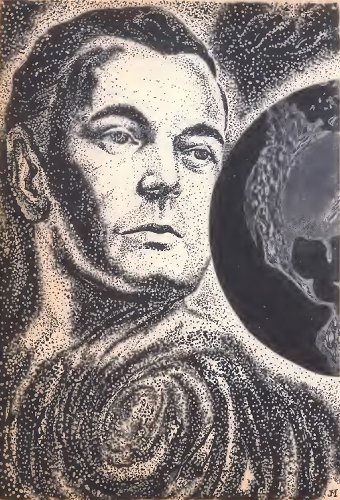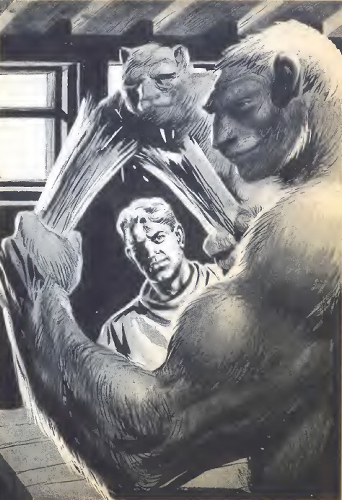
How scary is a truly dark night sky?
In Asimov's Nightfall, a certain planet's orbital situation ensures that there is always a sun overhead. On the rare occasion that all of the nearby stars align on the opposite side of the planet, the planet's population is consumed with hysteria. I suppose it's a justifiable extrapolation of the impressive and cowing effect on our ancestors caused by eclipses of the sun.
In A. Bertram Chandler's The Man Who could not Stop (which I will discuss at length further on in the article), there are inhabited planets at the edge of the galaxy. When the lens of the galaxy aligns with a rim planet's sun, the result is a near-featureless dark sky marred only by a few far-away solitary stars and nebulae. As Chandler describes it, the effect is unsettling in the extreme, and most natives move away to planets comfortably surrounded with stars.
I suppose it's Chandler's world, and he can do what he wants, but would a truly empty sky be that disconcerting? Even today, on Earth, there are plenty of locales where cloud cover renders the stars invisible. In downtown Tokyo or New York, the lights of the city drown out any puny stellar competition. I should think that the spectacle of the full lens of the galaxy, visible at least half of the year, would more than make up for a half-year of darkness.
What do you think?
As you can probably guess, I have finished this month's Fantasy & Science Fiction, and I've got a report for you. I can honestly say that the magazine ended on a rising trend, quality-wise.
The lovely Rosel George Brown is back with the light-hearted Lost in Translation. It's a silly tale of time travel featuring a drippy but lovely fan of the classics (the Greek classics, that is), but the whole thing is really just a set-up for a bad pun at the end. I like Brown's writing–I'm just waiting for one of her stories to really wow me.

Avram Davidson's The Montavarde Camera is a moody piece (does he write any other kind?) about an antique camera whose pictures spell doom for their subject. Well-written (does he ever write poorly?), but rather a second-rate premise.
I enjoyed (with reservations) Jack London's tale of present-day adventure told in past-tense, The Angry Mammoth, in which a hunter recounts his adventures tracking down and killing the last of the hairy elephant cousins. Not for the animal-lover. Of course, it is a reprint, the original story having been published in 1901 (and it reads like it).
But the real jewel of this issue is the aforementioned The Man Who could not Stop. It is a little reminiscent of those stories where people who could not fit into the regimented roles meted out by society (a la Asimov's Profession) become its masters. In Chandler's story, the protagonist (name of Clavering) is a hardened criminal fleeing justice. He runs from Earth to the galaxy's rim, from where extradition is impossible. Once there, however, he quickly runs afoul of the law. The first time is intentional–he wants to be incarcerated to locate a fence so as to offload a haul of stolen jewelry. The second time is unintentional, but criminal habits are hard to break (and the rim planets make recidivism all but inevitable). The third time is intentional–our anti-hero is told that criminals are deported third time 'round.
Except it turns out that deportation is a one-way trip into the abyss; Clavering ends up press-ganged into the crew of a starship heading out deep into inter-galactic space. So we learn that this is standard operating procedure on the rim worlds: attract the incorrigible and shanghai them.
I liked it a lot, and I understand there may be more tales of the rim worlds on the way. I'm looking forward to it.
That's that for today. I've largely finished this month's Galaxy (which is excellent, by the way), but I understand that NASA plans to announce the Mercury astronauts on April 9, so I'm sure that event will feature prominently in my next article.
Thanks for reading!
(Confused? Click here for an explanation as to what's really going on)
This entry was originally posted at Dreamwidth, where it has comments. Please comment here or there.







